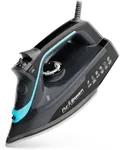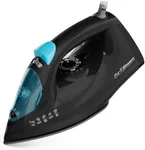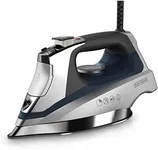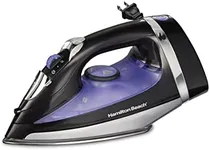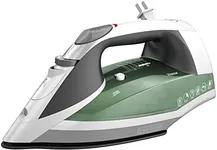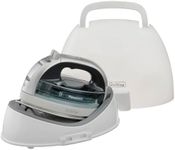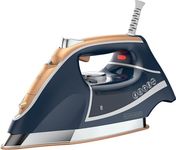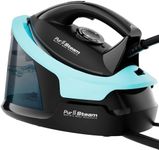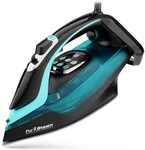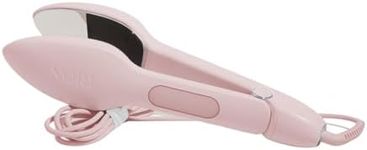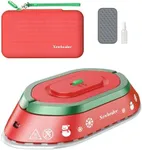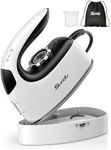Buying Guide for the Best Steam Irons
When choosing a steam iron, it's important to find a model that matches how often you iron, the types of fabrics you handle, and the comfort you want in using the device. Pay attention to features that will make ironing easier and more effective, such as how quickly the iron heats up, how much steam it delivers, and how comfortable it feels in your hand. By looking closely at the main specifications and thinking about your own habits, you can pick an iron that delivers good performance without unnecessary extras.Steam OutputSteam output refers to the amount of steam the iron releases, and it directly affects how well wrinkles can be removed from fabric. Higher steam outputs generally make it easier to handle tough creases or thicker fabrics like denim, while lower outputs work fine for simple, lightweight garments. Steam output is usually measured in grams per minute. Light users who mostly deal with shirts or delicate clothes can stick with lower steam output, while frequent ironers or those working on stubborn fabrics should look for higher steam output.
Soleplate MaterialThe soleplate is the flat part of the iron that comes in direct contact with your clothes. Its material affects how smoothly the iron glides and how easy it is to keep clean. Common materials include stainless steel, ceramic, and non-stick coatings. Stainless steel offers durability and smooth movement, ceramic distributes heat evenly and resists scratches, and non-stick coatings make cleaning easier. If you want something long-lasting and for frequent use, go for stainless steel or ceramic. For hassle-free cleanup, non-stick might be best.
Water Tank CapacityWater tank capacity tells you how much water you can put in your iron for producing steam. Smaller tanks mean the iron is lighter and easier to handle, but you'll need to refill more often—these are usually best for short or occasional ironing sessions. Medium to larger tanks let you iron longer without breaks, which is helpful for big batches of laundry. If you regularly iron lots of clothes, consider a larger water tank; otherwise, a smaller one can keep the iron nimble for quick jobs.
Heat-up TimeHeat-up time is how long it takes for the iron to reach the desired temperature after you switch it on. Faster heating means less waiting and is convenient for busy schedules or quick touch-ups, while longer heat-up times can slow you down. Most modern irons heat up in less than a minute, but if you often iron in a hurry, checking this feature is worthwhile. Choose a quick heat-up iron if efficiency matters to you.
Weight and ErgonomicsWeight and ergonomics influence how comfortable an iron feels during use, especially for long ironing sessions. Heavier irons can press out wrinkles more easily but may cause fatigue, while lighter irons are easier to maneuver but might require you to apply more pressure. Ergonomic handles and well-balanced designs help reduce strain. Think about how much ironing you do and your preferred comfort—if you iron often or for long periods, pick an iron with a weight and grip that won’t tire your hand.
Anti-Drip and Anti-Scale FeaturesAnti-drip features prevent water from leaking and staining clothes when ironing at lower temperatures, while anti-scale helps manage the buildup of minerals from hard water inside the iron. Both features make using and maintaining your iron easier and keep it working well over time. If your water is hard or you want to avoid water marks on delicate fabrics, look for these features as a practical choice.
Variable Temperature and Steam SettingsVariable temperature and steam settings let you adjust the heat and steam based on what you are ironing. Delicate fabrics need lower temperatures and less steam, while thicker fabrics need more. Having adjustable settings gives you better control and helps protect your clothes from damage. If you iron a variety of fabrics, a model with easy-to-use controls for both temperature and steam is the most versatile option.
